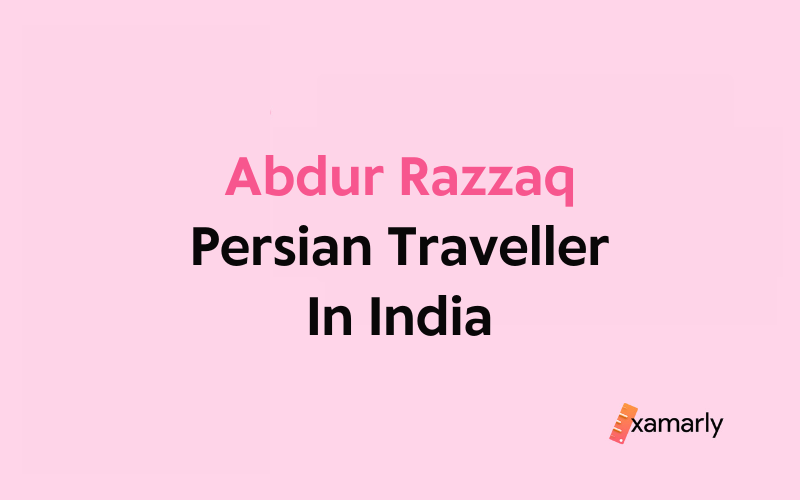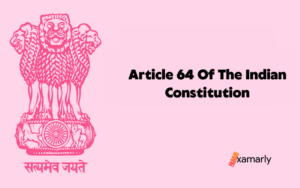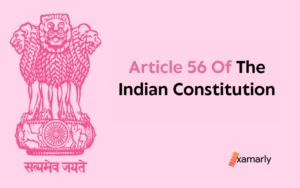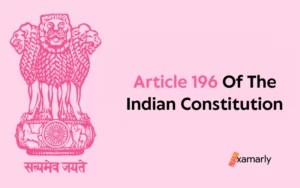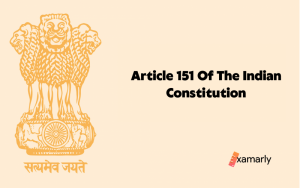Abdur Razzaq Samarqandi was a Persian traveler, a diplomat of the Shah Rukh in Persia, and is among the famous foreign travellers to visit India. If you’re looking for fascinating biographies of famous 15th-century travellers, this will be a perfect start.
He witnessed political and military events in Samarqand (in present-day Uzbekistan) and Herat (in present-day Afghanistan).
He wrote a 45-page travelogue about his experiences, which includes first-hand accounts of the lives of common people in Calicut and the events that took place in the Ancient City of Vijayanagar at Hampi. He provided one of the most significant descriptions of the Vijayanagar Empire in the 15th century.
From the record of Chinese travellers, Portuguese travellers & renowned explorers like Marco Polo, we come to know about ancient India in a much better way. We shall talk more about Abdur Razzaq in this section since it will help us comprehend how foreigners in ancient times saw India.
- Abdur Razzaq Persian Traveller in India – Early Life & Background
- Abdur Razzaq: Travel and Writings
- Abdur Razzaq: Visiting India
- Accounts of Abdur Razzaq in India
- List of Foreign Travellers who Visited the Vijayanagara Kingdom
- Summary
- FAQs on Abdur Razzaq Persian Traveller in India
- Who was Abdur Razzaq?
- When did Abdur Razzaq visit India?
- What did Abdur Razzaq write about his travels in India?
- What did Abdur Razzaq observe about India?
- How did Abdur Razzaq's travelogue influence historical research on India?
- What other places did Abdur Razzaq visit besides India?
- Why did Abdur Razzaq chose not to travel again?
Abdur Razzaq Persian Traveller in India – Early Life & Background
- He was the son of Jalal-ud-Din Ishaq.
- He was born on November 7, 1413 in Herat.
- Abdur Razzak’s father served as the Qazi and Imam of the Shah Rukh’s court in Herat. Shah Rukh, the ruler of Persia, was a Timurid dynasty member (Timur was succeeded by his son Shah rukh).
- Following his father’s death in 1437, Abdur was appointed as the Qazi of Shah Rukh’s court.
- Razzak flourished as a legal courtier, trustee, and ambassador under his tutelage.
- From that moment on, he witnessed military and political operations, as well as diplomatic and military missions, in the capital cities of Herat and Samarqand.
- His diplomatic duties took Razzaq to many different places all across & around Eurasia. He visit to India was his most significant obligation.
You might also like to read about: Delhi Sultanate Dynasty.
Abdur Razzaq: Travel and Writings
Abdur Razzaq embarked on several diplomatic missions throughout his lifetime, including visits to India and the court of Timur in Central Asia.
His most well-known journey was his pilgrimage to Mecca, during which he traveled through Iran, Iraq, and the Arabian Peninsula, recording his observations in a travelogue called “Matla’ al-sa’rayn.” This work provides valuable insights into the social, cultural, and religious practices of the region during the late 15th century.
Abdur Razzaq is primarily known for his travelogue “Matla’ al-sa’rayn”. The work is highly regarded for its detailed and vivid descriptions of people, places, and customs, and it provides valuable insights into the cultural and historical context of the period.
Abdur Razzaq also wrote other works, including a biography of Timur and a book on the history of Central Asia, but these have not survived to the present day.
If you’re preparing for the UPSC Exams, our blog on How To Study History For UPSC will help you out.
Abdur Razzaq: Visiting India
Abdur Razzaq represented Shah Rukh, the Timurid dynasty monarch of Persia, in Kozhikode, India, from January 1442 to January 1445. He chronicled his travels to India in a travelogue with a 45-page narrative.
It is included as a section in his memoir “Matla-us-Sadain wa Majma-ul-Bahrain”, also known as The Rising of Two Auspicious Constellations and the Meeting of Two Oceans, a work of approximately 450 pages that provides a thorough account of the history of his region & of the world from 1304 to 1470 and draws heavily on other writings.
- In his account of his trip to India, he describes the wealth and tremendous magnificence of the Ancient City of Vijayanagara at Hampi as well as life and happenings in Calicut under the Zamorin.
- Vijayanagar was referenced to as a city “the pupil of the eye has never seen, and the ear of wisdom has never heard” by him.
- The Bahmani Empire, which was established by a family of Iranian ancestry, was the dominant Muslim authority in the Deccan at the time.
- Abdur Razzaq was sent on a three-year voyage by Shah Rukh of Persia in 1441, with most of that time being spent at the court of the Zamorin of Calicut (King Samudri of Kozhikode in Kerala).
- He was unwilling to embark on a voyage and only did so at the monarch’s request. In January 1442, he left from Herat.
- After overcoming the dangers at sea, he landed in Muscat for safety, then traveled to Kariat in Kerala, and fell gravely ill from the heat, however eventually he recovered enough to continue on an 18-day voyage by sea to Calicut in southwest India.
- The residents of Calicut, whom Abdur Razzaq characterized as wearing minimal clothing and engaging in polyandry, did not impress him. Due to the Vijayanagar King’s invitation to visit his realm, his stay in Calicut was only momentary.
- He landed in the Vijaynagar Empire through Mangalore.
- He spent his entire year in the court of the King of Vijayanagara in Hampi. He departed from the city and took an 18-day journey to reach Mangalore, followed by stops in Kalahat, Muscat, Khorfakkan, and the port of Hurmuz.
- According to Razzak, Deva Raya II‘s domain extended from Orissa to Malabar and from Ceylon (present-day Sri Lanka) to Gulbarga.
- He spent a total of 75 days at sea and never set out on another journey after that.
Also read about the different Indian States in our blogs on:
Accounts of Abdur Razzaq in India
Though he was an apprehensive traveler, his accounts are vivid and full of information, describing the Vijayanagara Kingdom in great detail. Some of his narrations are given below:
- He characterized King Deva Raya as having an olive complexion, an ornate collar of pearls, and being seated in a room with forty pillars while being surrounded by Brahmans when they first met. He was youthful, tall, and had no mustache or beard.
- Abdur Razzak received a Chinese fan, cash, camphor, and betel when he encountered the King. Razzak lived on high ground close to the king’s palace and received two sheep, four pairs of chickens, rice, butter, and two gold varahas per day.
- He stated that a capable King oversaw the kingdom of Vijayanagara. It was dotted with gardens, temples, and palaces.
- There were 1,100,000 warriors and 300 docks. The kingdom had strong defences, and money was abounding in the markets.
- He also referred to the Royal Center of Hampi, where numerous streams and rivulets ran along channels made of cut-stone.
- He gave a detailed account of the city’s beauty, prosperity, and vast agriculture.
If reading this inspires & interests you to take History as an optional for UPSC, our following blogs will be super-helpful:
List of Foreign Travellers who Visited the Vijayanagara Kingdom
The Vijayanagara Empire in South India was a prominent center of trade, culture, and power during the 14th-16th centuries, attracting visitors from different parts of the world. Some of the foreign travelers who visited the Vijayanagara Kingdom are:
- Ibn Battuta: A Moroccan traveler who visited Vijayanagara in 1342 and wrote about the city’s opulence and grandeur.
- Niccolò de’ Conti: An Italian merchant who visited Vijayanagara in the 15th century and wrote about its wealth and commercial activity.
- Abdur Razzak: A Persian ambassador who visited the Vijayanagara court in the 15th century and wrote about its political and cultural landscape.
- Domingo Paes: A Portuguese traveler who visited Vijayanagara in the early 16th century and wrote about its military might and urban development.
- Fernão Nunes: A Portuguese traveler who visited the region in the early 16th century and wrote about the Vijayanagara Empire’s political and economic systems.
- Nuniz: A Portuguese traveler who visited the empire in the early 16th century and wrote about its customs and traditions.
- Varthema: An Italian traveler who visited the empire in the early 16th century and wrote about its people and culture.
These accounts provide valuable insights into the history, culture, and society of the Vijayanagara Empire.
Summary
Abdur Razzaq was a traveler who spent a lot of time in India during the Medieval Era. His chronicles provide us with enough information on the Vijayanagara Kingdom. He wasn’t a particularly ardent traveller, though. However, in his accounts, he is enthused to talk about the city of Vijayanagara.
FAQs on Abdur Razzaq Persian Traveller in India
Who was Abdur Razzaq?
Abdur Razzaq was a 15th-century Persian diplomat and traveler who visited India during the reign of Sultan Muhammad bin Tughlaq and wrote a travelogue about his experiences.
When did Abdur Razzaq visit India?
Abdur Razzaq visited India in the 1440s during the reign of Sultan Muhammad bin Tughlaq of the Tughlaq dynasty.
What did Abdur Razzaq write about his travels in India?
Abdur Razzaq wrote a detailed travelogue about his experiences in India, called “Matla’ al-sa’rayn,” which provides valuable insights into the social, cultural, and political practices of the region during the 15th century.
What did Abdur Razzaq observe about India?
In his travelogue, Abdur Razzaq described the geography, climate, agriculture, flora and fauna of India. He also wrote about the architecture, customs, and religious practices of the region, as well as the political and military developments during his visit.
How did Abdur Razzaq’s travelogue influence historical research on India?
Abdur Razzaq’s travelogue provides a first-hand account of the region during the 15th century and has been used by scholars to understand the cultural, social, and political history of India during that period.
What other places did Abdur Razzaq visit besides India?
Abdur Razzaq also visited the court of Timur in Central Asia and made a pilgrimage to Mecca, during which he traveled through Iran, Iraq, and the Arabian Peninsula.
Why did Abdur Razzaq chose not to travel again?
Abdul-Razzaq became a reluctant traveller and did not want to travel again and he had good reasons for doing so. His brother was killed during the voyage and he was captured in court intrigues. The journey was dangerous and fast-paced. Abdur Razzak pledged to stay home.


